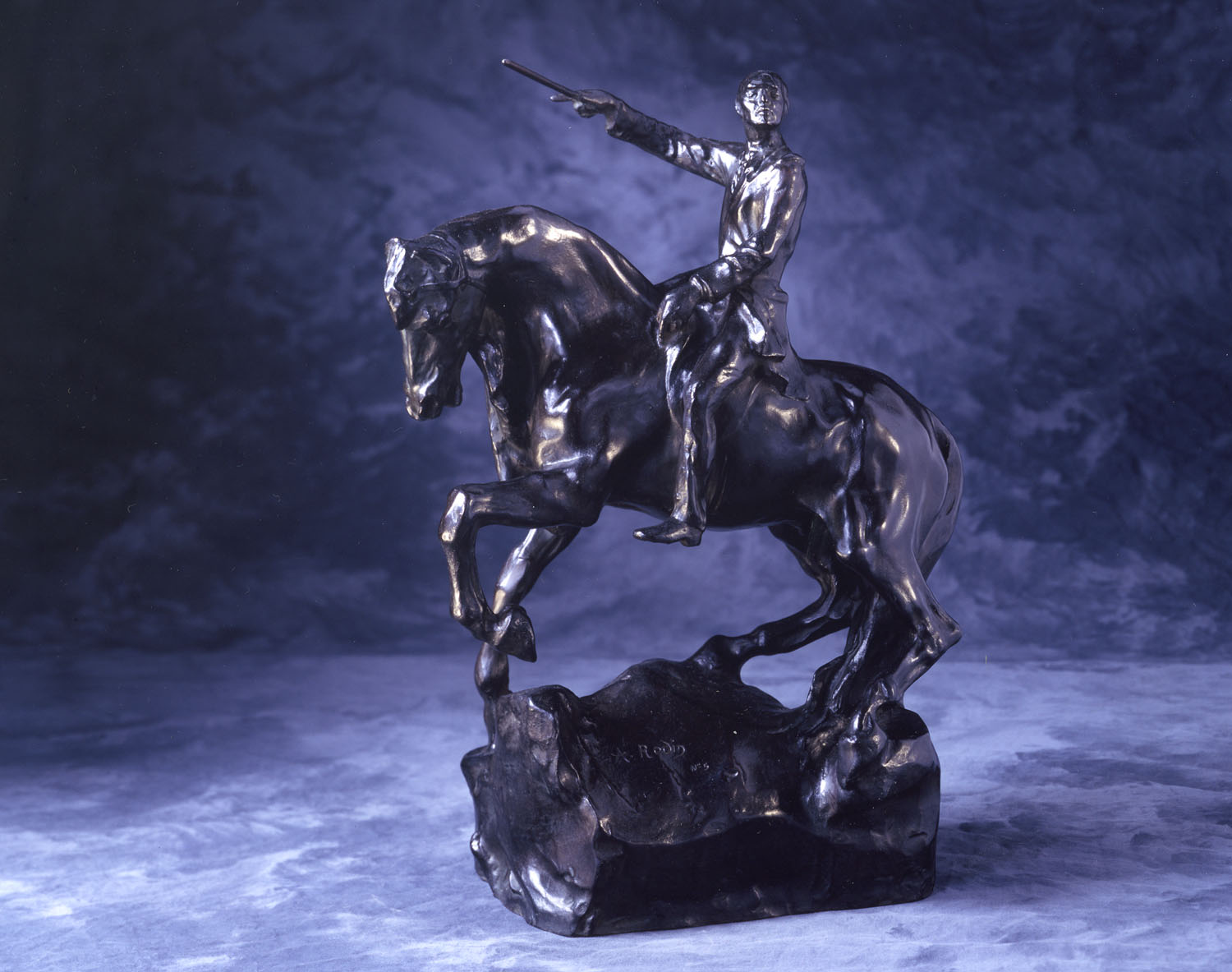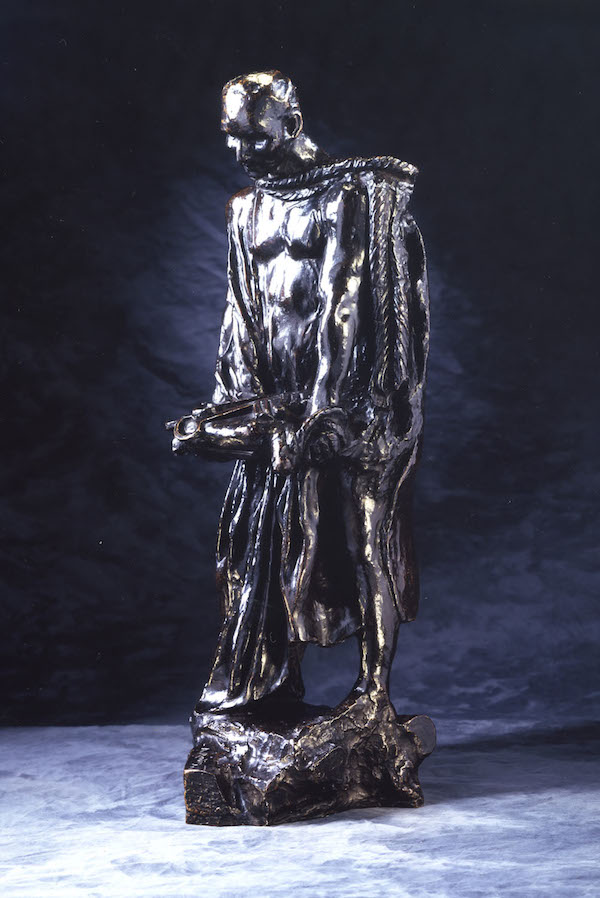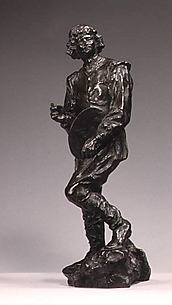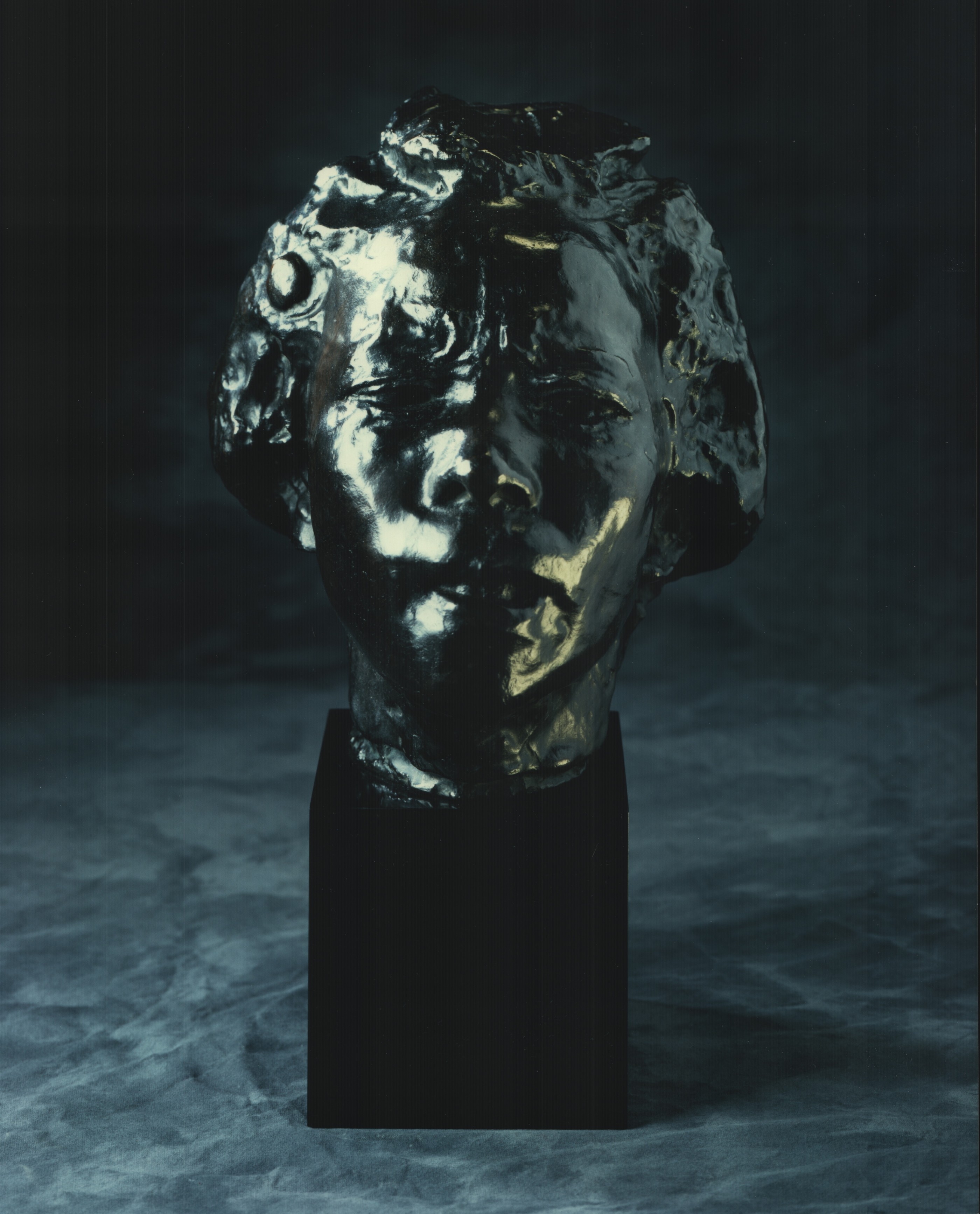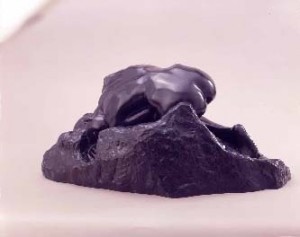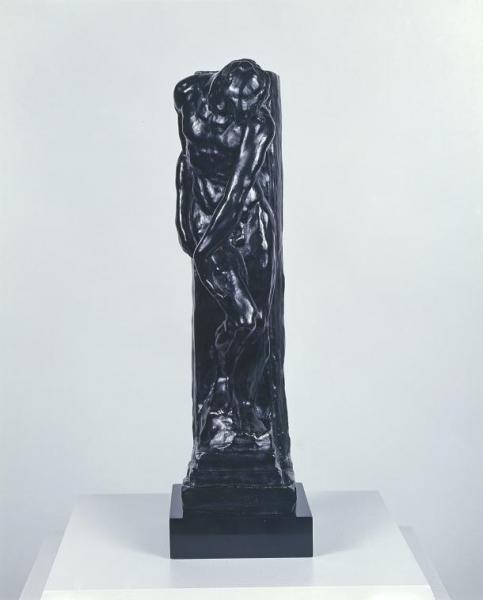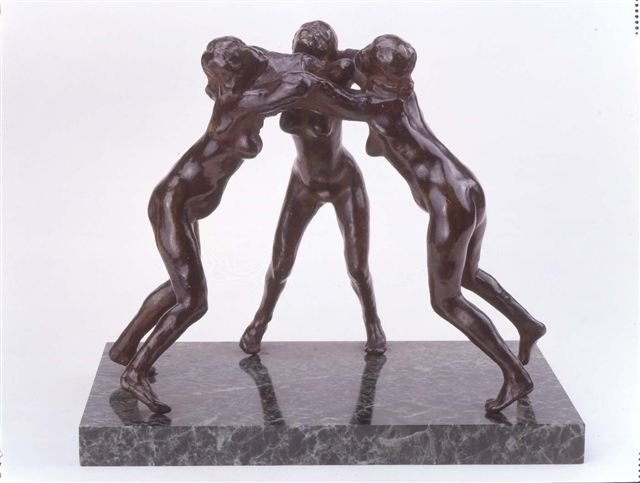Maquette for the Monument to General Lynch
Rodin received a number of commissions for portraits to commemorate the public lives of admired and important men. From Balzac and Hugo, Claude and Bastien-Lepage, to monuments to Whistler and Lynch, the sculptor saw these major commissions as opportunities to innovate. General Patricio Lynch Solo de Zaldivar (1824-1886) was a Chilean hero of the War of the Pacific between Chile and Peru (1879-1883). The monument was commissioned by his son-in-law, a Chilean diplomat. Rodin’s maquette (sculpted sketch) reveals his intention to create an equestrian monument to rival those already revered by history: Donatello’s Gattamelata and Verrochio’s Colleoni, as well as the Marcus Aurelius in Rome and Bernini’s Louis XIV in Versailles. It is the horse that gives Rodin’s piece its life. The spirited pose, intended for atop a rectangular pedestal, conveys the dynamic military leader Lynch in a way the maquette of the figure alone itself does not. In the end, the Monument to...





